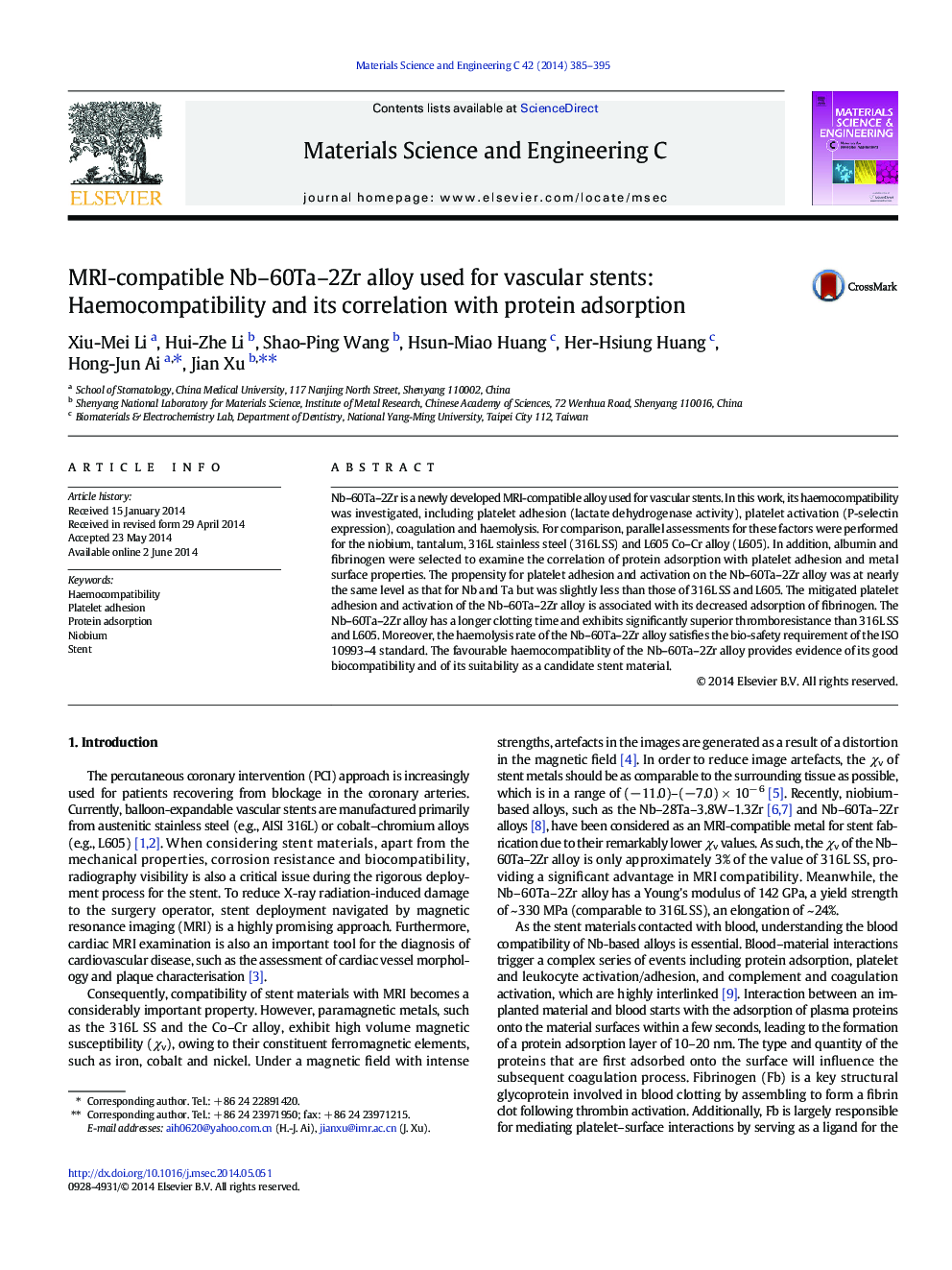| کد مقاله | کد نشریه | سال انتشار | مقاله انگلیسی | نسخه تمام متن |
|---|---|---|---|---|
| 1428649 | 1509179 | 2014 | 11 صفحه PDF | دانلود رایگان |

• The Nb–60Ta–2Zr alloy is less hydrophobic than the 316L SS and L605 alloy.
• The Nb–60Ta–2Zr has slightly weak propensity for platelet adhesion and activation.
• The Nb–60Ta–2Zr alloy results in a longer clotting time.
• Haemolysis of Nb–60Ta–2Zr is slightly lower than that of 316L SS and L605.
• The Nb–60Ta–2Zr alloy is a promising MRI-compatible stent material.
Nb–60Ta–2Zr is a newly developed MRI-compatible alloy used for vascular stents. In this work, its haemocompatibility was investigated, including platelet adhesion (lactate dehydrogenase activity), platelet activation (P-selectin expression), coagulation and haemolysis. For comparison, parallel assessments for these factors were performed for the niobium, tantalum, 316L stainless steel (316L SS) and L605 Co–Cr alloy (L605). In addition, albumin and fibrinogen were selected to examine the correlation of protein adsorption with platelet adhesion and metal surface properties. The propensity for platelet adhesion and activation on the Nb–60Ta–2Zr alloy was at nearly the same level as that for Nb and Ta but was slightly less than those of 316L SS and L605. The mitigated platelet adhesion and activation of the Nb–60Ta–2Zr alloy is associated with its decreased adsorption of fibrinogen. The Nb–60Ta–2Zr alloy has a longer clotting time and exhibits significantly superior thromboresistance than 316L SS and L605. Moreover, the haemolysis rate of the Nb–60Ta–2Zr alloy satisfies the bio-safety requirement of the ISO 10993–4 standard. The favourable haemocompatiblity of the Nb–60Ta–2Zr alloy provides evidence of its good biocompatibility and of its suitability as a candidate stent material.
Journal: Materials Science and Engineering: C - Volume 42, 1 September 2014, Pages 385–395